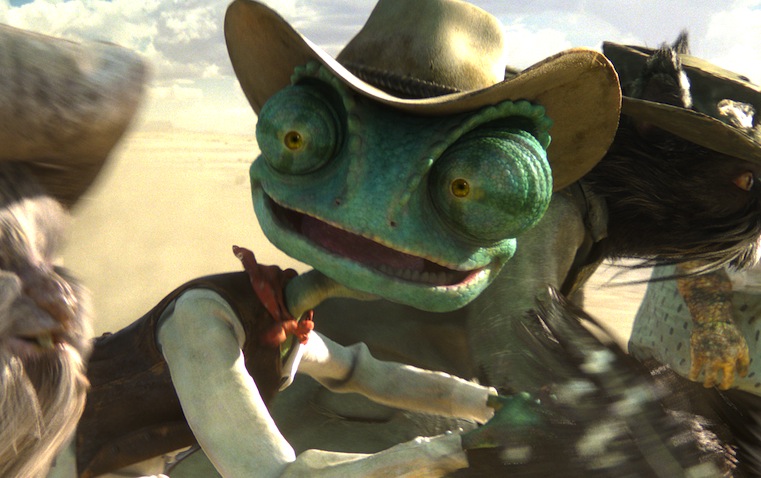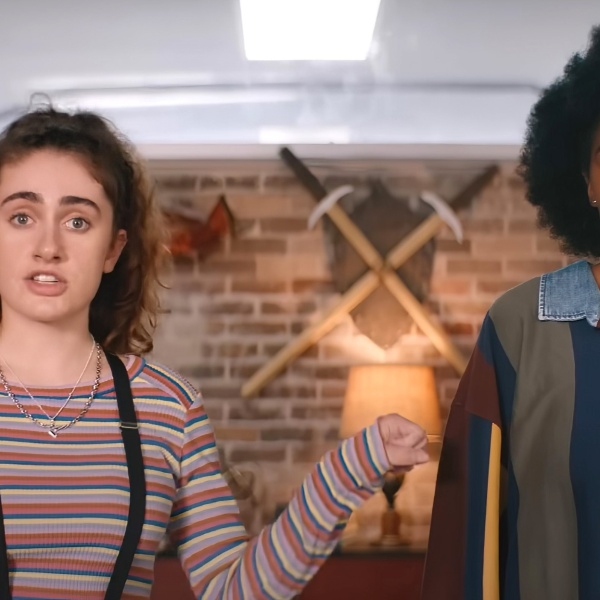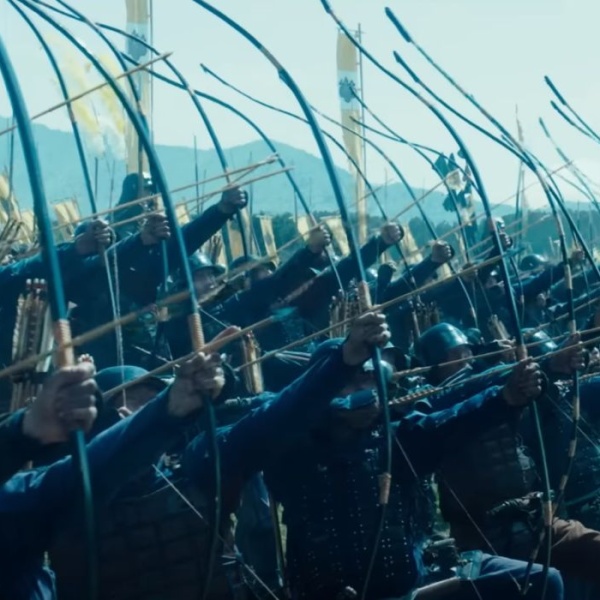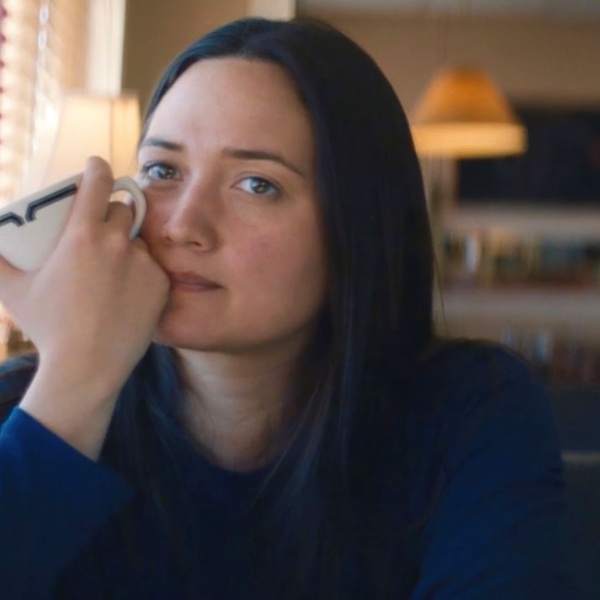Almost every week it seems like there’s a new animated film being released to the multiplexes (many of them in the costly and annoying 3D format), so it takes a special kind of film to break out of the (mostly) computer animated pack. Which is why it’s so nice to report that “Rango,” Gore Verbinski’s surrealist spaghetti western (which stars Johnny Depp as a chameleon searching for his identity), is profoundly weird. It’s this trait, along with its jaw-dropping gorgeous animation, that makes it stand out, loud and proud, and should ensure a long and fruitful life (if not immediate commercial success and/or acceptance).
We’ve decided to take a look back at the oddball animation gems that have peppered the cartoon landscape over the years, mostly before the Disney animated musicals, Pixar wonderments on the good side, and pop culturally savvy DreamWorks fare on the bad, dominated the multiplexes. Hopefully “Rango” will allow for more variety in the marketplace (its PG-rating already pushes some boundaries). It’s a very good thing that it so proudly lets its freak flag fly. Here are some of our favorites from years gone by.
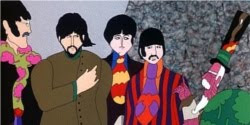 “Yellow Submarine” (1968)
“Yellow Submarine” (1968)
For all of its hallucinogenic trippiness, which makes it a favorite for late night tokers, “Yellow Submarine” endures thanks to its inherent sweetness, like an early-animated “Sesame Street” segment gone off the rails. Instead of trying to judge the movie based on any sort of narrative coherence or storytelling skill (basically concerning itself with the Blue Meanies, a band of monstrous cretins, and their attack on free will, imagination, and general grooviness – all the things the animated Beatles stand for), the movie works best as a kind of jukebox musical, packed with references to the band and their songwriting (even if the musicians themselves were involved only minimally). The animation, for all its primal crudity, has an easily enjoyed charm, with a flower-power liquescence to the movement of characters (and the titular underwater vehicle). Decades before Julie Taymor’s disastrous “Across the Universe,” “Yellow Submarine” was a more eloquent love letter to Beatles lore and miscellanea, and a hell of a lot more fun to watch.
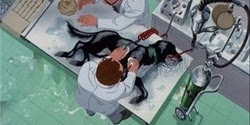 “The Plague Dogs” (1982)
“The Plague Dogs” (1982)
Dog lovers, abandon all hope, ye who enter here. Based on the novel by Richard Adams, who previously wrote “Watership Down,” and directed by Martin Rosen, who was also behind the animated version of Adams’ earlier rabbit-driven bloodfest, “The Plague Dogs” concerns a canine duo who escape from an animal testing facility. While we suspect they don’t have much time to live (one of them sports a partially-exposed skull), they are hunted by law enforcement officials who believe the dogs carry a disease. Despite gorgeous storybook animation and strong voice work by John Hurt and Christopher Benjamin, “The Plague Dogs” seems mainly interested in the possibly futile attempts by the dogs to survive another day despite an unfamiliar territory and uncertainty about food, with the undying promise of a safe haven just over the horizon. Look out for one of the most soul-crushing endings you’re likely to see in any animated film ever.
 “Spirited Away” (2001)
“Spirited Away” (2001)
To Western eyes at least, none of Hayao Miyazaki’s work is exactly straight-forward: plots for Studio Ghibli pictures include children who befriend forest spirits in post-war Japan, a witch who starts a courier service, and an anti-fascist bi-plane pilot who’s transformed into a pig. But easily his most oblique work, “Spirited Away” was, happily, also his most acclaimed (winning the Golden Bear and a Best Animated Feature Oscar) and most commercially successful. Beginning, albeit briefly, in the real world, ten-year-old Chihiro comes across an abandoned amusement park, and sees her parents transformed into pigs in front of her eyes. Her name is then stolen by a witch, she befriends a boy who’s actually a dragon, saving him from paper birds, and makes him cough up a slug. And that’s just the first half. The imagery’s truly extraordinary (we’ve barely scratched the surface), but it’s all working to a purpose — one of the most truly moving coming-of-age tales since “Alice in Wonderland,” and possibly even trippier than Lewis Carroll’s tale.
 “Fantastic Planet” (1973)
“Fantastic Planet” (1973)
Now here’s a film that kisses the idea of outlandish cult films on the mouth. Director René Laloux and artist Roland Topor team up for this short & strange sci-fi, demanding both attention and interpretation as they revel in their (never forced) bat-shit ways. On an alien planet, humans (known as Ohms) are cultivated by an alien race known as Draags, which are giant spiritual beings who either keep Ohms as pets or ban them from their civilization with an occasional extermination cycle. The narrative follows pet Ohm Terr who ends up learning the Draag culture and escaping to the wild, spreading his wisdom to an unwilling and religious tribe. Laloux, like a pro, keeps dialogue to a minimum and allows the weirdness to speak for itself (instead of the now-too-common “newbie” character, who must have everything explained to them ala Ellen Page in “Inception”), focusing on the two societies’ rituals and relationships with each other and the wildlife. There’s some ardent metaphors here, definitely, but if that’s not your cup of tea, it contains probably the greatest soundtrack ever. Plus, dude, you can totally get baked to it.
 “Heavy Metal” (1981)
“Heavy Metal” (1981)
Rewatching “Heavy Metal,” which recently made its way to the glorious Blu-ray high-definition format, what becomes very apparent is the influence that the second story in the loose, tits-and-blood anthology (based on the cult sci-fi magazine of the same time), had on Luc Besson’s “The Fifth Element.” It, like “Element,” centers around a gruff, unspeakably jaded New York City taxi cab driver (Richard Romanus) who stumbles across a beautiful girl with a secret, and unwittingly becomes her ally. The rest of the movie remains pretty cool (it’s nifty to see artwork by icons like Richard Corben, up on screen, moving around), but the herky-jerky animation style is often times too sketchy to be fully enjoyed. Part of this is due to the movie’s cheapness, another part due to the often rotoscoped images (sort of an early motion capture), but a lot of it has to do with the attitude of “Heavy Metal” – the source material was definitely 100% “fuck you,” why should the movie be any different?
 “Coonskin” (1975)
“Coonskin” (1975)
Abrasive, aggressive and banned, repackaged and, as of now, blocked from mass media consumption, Ralph Bakshi’s groundbreaking mix of animated and live action film concerns three African American animals who rise up the ranks of criminals in Harlem. As they take on the mob and crooked law enforcement officials, the trio float from live action to animation, as they move through African American history and iconography, exploiting the racist caricatures of the late twentieth century black man. It shows how deeply ingrained in our society the images lampooned in the film are when you watch “Coonskin” today and realize how little has actually changed, which speaks poorly to American society as much as it does to the lasting power of one of Bakshi’s best and most confrontational works.
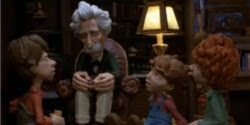 “The Adventures of Mark Twain” (1986)
“The Adventures of Mark Twain” (1986)
At some point not too long ago, a curious clip made rounds on the internet, one that involved three claymated kids and a creature speaking of death, the futility of mankind, and a few other disturbingly thoughtful topics in a creepy voice. Simply titled “Banned from TV,” seasoned vets were quick to point out that it was a sequence from Will Vinton’s 1986 “The Adventures of Mark Twain,” the first feature film to be entirely clay-animated. In this tale, Twain legends Tom Sawyer, Huck Finn, and Becky Thatcher hitch a ride on the author’s airship as he rides on a collision course towards Haley’s Comet, encountering different embodiments of his philosophy along the way. Nothing in the film is as disturbingly odd as the clip above (some TV airings even went so far as to cut it out of the broadcast), but make no mistake: it’s very much an acid-trip, from the warping pet frog to the extended story of Adam & Eve, all culminating with Twain meeting his “dark” half. It’s an old treasure worth revisiting, sober or not.
 “The Tune” (1992)
“The Tune” (1992)
Certainly any of Bill Plympton’s animated features would fit comfortably on the list, but it’s his bizarre musical debut that remains closest to the heart. Following songwriter Del on a quest to write the perfect song in hopes to impress both boss and main squeeze, the filmmaker takes every opportunity in this charming collection of vignettes to showcase pure weirdness, with some catchy songs thrown in for good mesaure. Plympton (aka the man who flipped off Disney) has often been derided (unfairly) for having a crude style, but those that are less quick to dismiss his lo-fi sensibility will find much to appreciate, particularly in his ability to illustrate transformations and the unique tone his style brings. “The Tune” is completely wild, driven by a youthful desire that still feels fresh and fun almost two decades later. Plus, how can you not love a film that displays this kind of comic genius?
 “The Haunted World of El Superbeasto” (2009)
“The Haunted World of El Superbeasto” (2009)
If you’ve ever had the inclination to crack open Rob Zombie’s skull and peer inside (and lord knows plenty of us did after “Halloween”), save yourself the trouble and just watch “The Haunted World of El Superbeasto” instead. Calamitous to the point of near-incomprehensibility, the film takes place in an alternate reality where every horror ghoul, ghost, and goblin resides – John Hurt from “Alien” sits at a bar next to Jack Nicholson from “The Shining,” that sort of thing. Our hero, El Superbeasto (Tom Papa, who also co-wrote the film), is a director and former wrestler. He works alongside his sister, Suzi-X (Sheri Moon-Zombie), an ass-kicking vixen, as they work to bring down the villainous Dr. Satan (Paul Giamatti). “Superbeasto” acts as a one-film compendium to the Rob Zombie oeuvre – characters from “The Devil’s Rejects,” his “Halloween” remake, even the faux Nazi exploitation trailer he cooked up for “Grindhouse,” all crop up. It’s a mini-masterpiece and the only contemporary film to truly evoke the arcane spirit of Ralph Bakshi.
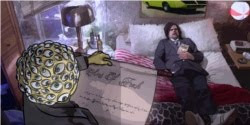 “A Scanner Darkly” (2006)
“A Scanner Darkly” (2006)
Richard Linklater’s second (and, let’s be honest here, probably last) animated feature largely sidestepped the intellectual booby-traps that kept “Waking Life” from being, you know, entertaining. Instead of aimless stoner philosophizing, Linklater chose a Philip K. Dick novel about a drug enforcement agent (Keanu Reeves) who becomes a hostage of his own addiction. As heartbreaking as it is exhilarating, the breezy, impressionistic rotoscoped animation is the perfect fit for the material: when the characters are feeling anxious or high, the animation warbles accordingly. But the greatest feat is the “scramble suit,” a disguise that the agents use to hide their identities. A constantly shifting mass (a “vague blur,” as a character in the movie says), it, like the movie, is impossible to pin down… or take your eyes off of.
Honorable Mentions: There’s a few obvious exceptions here that we’ve missed out, and some more obscure pictures. “Pink Floyd’s The Wall” is pretty far-out but, it’s not entirely animated and, if, like this writer, you can’t really stand either the band or (with some exceptions) Alan Parker, it’s not the easiest watch. “Watership Down,” like its less-well known successor above, is the stuff of nightmares; not weird so much as disturbing, but still powerful stuff.
“Fritz The Cat” is the best known of Ralph Bakshi’s works — it’s (very slightly) less provocative than “Coonskin” and still holds up well. And trust us, you haven’t seen it until you’ve seen it while under the influence, being projected side-by-side with “The Wizard of Oz” in a warehouse in Scotland. Of all the work of the late Satoshi Kon, “Paprika” might be the oddest, a visually-stunning dreamscape that Manga nerds will delight in telling you Christopher Nolan ripped off for “Inception” (even though, beyond the basic premise and a couple of similar images, the two films have little in common).
On the more obscure side of the spectrum, it isn’t entirely surprising that the musical “Shinbone Alley” failed to catch on, being, as it is, about a poet reincarnated as a cockroach after he commits suicide, but it’s still an entertaining watch. “Light Years,” from French animator Rene Laloux, is about as strange as you’d expect a science-fiction picture starring Glenn Close as the wing-headed leader of a utopian society, while Cuban flick “Vampires in Havana” is basically the Hanna-Barbera version of “True Blood.” There’s plenty more of Bill Plympton’s work to check out too; both “I Married A Strange Person!” and “Mutant Aliens” are definitely worth watching if you enjoy “The Tune.” – Drew Taylor, Gabe Toro, Christopher Bell, Oli Lyttelton
